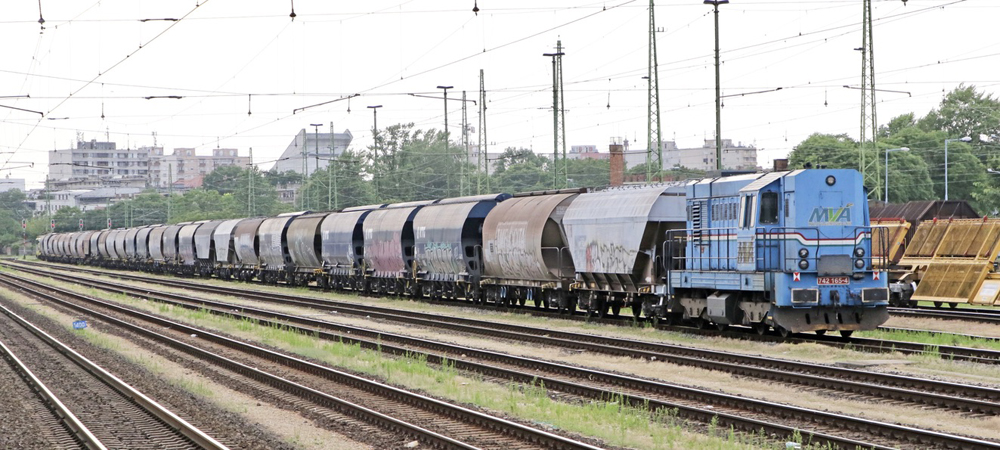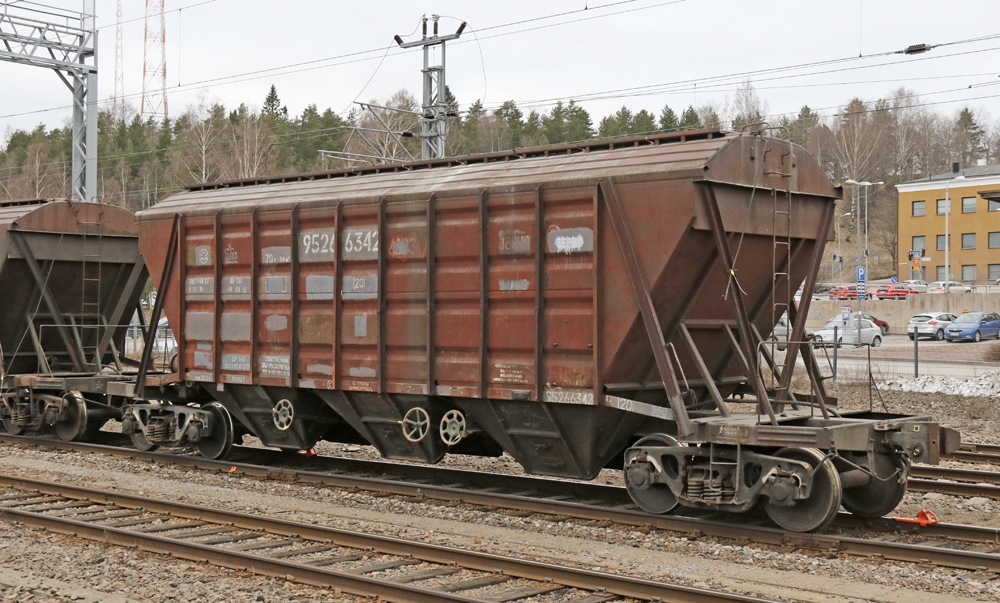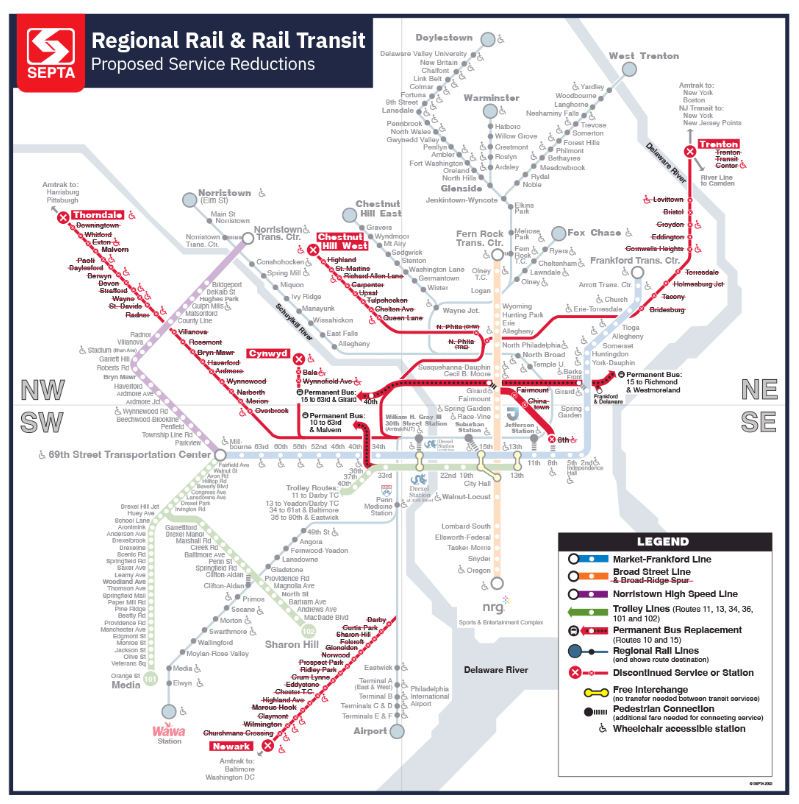
Ukrainian Railways (UZ or Ukrzaliznytsia) and rail operators in neighboring European countries are stepping up efforts to move thousands of tons of grain from Ukraine to ports in Poland, Romania, and Germany for export around the world.
The increase in rail transport has followed Russia’s decision to end a deal, previously brokered by the United Nations and Turkey, allowing grain exports by sea from Ukraine, despite Russia’s continued attempts to invade Ukraine. That deal had allowed the export of around 33 million tons of grain by sea between August 2022 and July this year.
Following Russia’s announcement July 18 that it would no longer participate in the grain deal, it has attacked many of Ukraine’s main grain export ports with missiles and drones. The port of Odesa has been a primary target, but also hit have been smaller river ports in Reni and Izmail, on the river Danube in the west of Ukraine and only a few hundred yards away from Romania, on the other side of the river. These attacks have clearly damaged the ports and destroyed or spoiled tons of stored grain and cereal.
Working with major rail freight companies such as Rail Cargo Austria, Poland’s PKP Cargo, and Germany’s DB Cargo, UZ is seeking to move larger amounts of grain and cereals by rail for export. This effort builds on previous exports by rail that began in 2022 following the Russian invasion.
To facilitate better rail links with its western neighbors, UZ has re-opened several cross-border rail lines that had laid dormant in recent decades [see “Ukraine’s railways mark one year of war,” Trains News Wire, Feb. 27, 2023]. This has improved connectivity with Poland, Romania, and Moldova, and has enabled some export traffic to use Romanian Black Sea ports, unaffected by the war, rather than Ukrainian ports at risk from Russian mines or naval activity. The European Union and European Bank for Reconstruction and Development have provided over $350 million in loans to UZ in the last year to finance better rail links with the rest of Europe, and earlier this year Ukraine and Poland signed an agreement to build a standard-gauge route linking the Polish border with Kyiv. No detailed timeframe for this has been announced.
UZ itself has recently set up an operating company in the European Union, named Ukrainian Railways Cargo Poland, headquartered in Warsaw. When operational, this company will be able to operate trains directly using locomotives and crews from the countries where it operates. These are likely to be Poland and Germany initially, as export traffic heads to the Polish ports on the Baltic Sea, or further west to the German ports of Hamburg and Bremerhaven on the North Sea coast.
The use of rail for grain transport within Ukraine isn’t new — historically, most export cereals traveled within the country to the ports by rail. But with the ports damaged and effectively blockaded by the threat posed by the Russian Navy in the Black Sea, the grain now needs to head west.
Before Russia invaded Ukraine in February 2022, the majority of Ukraine’s grain production was exported to Europe, China, and Africa, with almost all going by sea through Black Sea ports. In the 500-plus days since the invasion, that has already changed, with around 60% of a much-reduced amount of grain exports going overland via the European Union, much of it by rail, through so-called “solidarity lanes.” However, despite these efforts, the current operation cannot fully replace the now-blocked shipping route. In 2022, despite the war, Ukraine harvested 44 million tons of grain (down from 86 million tons the year before). Most would normally be exported around the world, but according to Ukrainian officials, no more than 2 million tons a month can be transported via the new rail and road routes.
Problems to overcome

Practical issues have had to be overcome to allow Ukrainian grain to be exported by rail. Ukraine, and its smaller neighbor Moldova, use 5-foot or 1,520mm gauge railways, while neighboring European countries all use standard (or 1,435mm) gauge. While freight cars can be laboriously changed from 5-foot trucks to standard gauge at the border, the bigger problem is that a Ukrainian grain car on standard-gauge trucks cannot necessarily travel in a neighboring country as it will be too high or wide.
Since the Russian invasion, the export efforts have used a variety of new approaches. One involves containers fitted with internal liners which can hold grain; switching a container from a 5-foot-gauge flatcar to a standard-gauge car is much quicker than changing trucks on a grain car. The other main solution, lower tech but also time-consuming, is to physically switch the grain from the UZ car to a European one at a border transhipment facility. However, the number of European grain-carrying cars is not unlimited. Many are already assigned to other traffic. as it is peak harvest time across Europe as well.
Previous efforts to move grain west by rail have also led to unintended consequences, with some of the grain being sold in neighbouring Poland and Romania. This led to farmers in those countries complaining they are being put out of business because of cheaper Ukrainian grain flooding the market. The Polish, Bulgarian, Hungarian, Slovakian, and Romanian governments resolved this by effectively banning sale of Ukrainian grain in their countries, while simultaneously assisting with transit by rail to ports so that the grain can be exported. This approach is not universally popular with Ukraine (which would be happy to sell the grain at the first opportunity) or the European Union (which in theory controls trade policy within the bloc). But it appears to be a pragmatic solution which means grain can leave Ukraine and be shipped around the world, especially to African countries that rely on imports for their grain supply.














It would be in Ukraine’s best interest to make a standard gauge rail connection to the south via Hungary, Romania, Turkey, Iran, etc. , (much like their current Ukraine-Poland standard gauge connection plans), in hopes of a future uninterrupted standard gauge Silk Road connection to China and others.
And if India could figure out a way to create dual gauge, by squeezing 4′ 8.5″ standard gauge tracks in between their 5’6″ broad gauge tracks, that could be a big future accomplishment as well.
https://i.cbc.ca/1.2913173.1421443169!/fileImage/httpImage/image.jpg_gen/derivatives/original_1180/new-silk-road.jpg
https://www.cargoforwarder.eu/2022/11/06/ukraine-goes-standard-gauge/
The river Danube passes thru Ukraine?
When di it alter it’s course?
The Danube forms the border between Ukraine and NATO Member Romania near its mouth at the Black Sea. The port hit was Izmail, which is somewhat upstream.
It was risky of the Russians to do this because a NATO nation is across the river.
The nations that need the grain are Third World nations and have little or no say in the matter. Ukraine and the Eastern EU nations are actually competing for the grain sales so Ukranian grain is not completly welcome in the current EU.
The Black Sea route is best for shipping: simply exit through the Dardanelles and take the Med East to Suez for East Africa and Asia, or West to Gibraltar for West Africa and the Americas. This is why the Soviets, I mean Russians, are destroying Ukraine’s Black Sea and Danube River Ports.
Car size and couplers are issues for another posting. They affect use of Baltic, North Sea or Atlantic ports.
How many people rely on Ukrainian grain to avoid starvation? I would think they would have a vested interest in seeing the trains make it through.